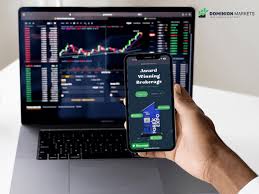
Understanding Maximum Leverage: A Guide for Investors
In the world of finance and trading, the term “maximum leverage” is often tossed around, but what does it truly mean? Maximum leverage represents the highest ratio of borrowed funds to equity that an investor can use in a trading strategy. It allows investors to control a larger position with a relatively small amount of capital. However, with great power comes great responsibility, and the risks associated with high leverage can be significant. In this article, we will delve into the intricacies of maximum leverage, its benefits and drawbacks, and how to effectively use it in your trading endeavors. Additionally, we’ll touch on platforms like what is maximum leverage Minereum that provide the environment for leveraging your investments.
What is Leverage?
Leverage in financial markets refers to the use of borrowed funds to amplify the potential returns of an investment. Essentially, it allows investors to open positions that are larger than their actual equity. For instance, if an investor has $1,000 and uses a leverage ratio of 10:1, they can control a position worth $10,000. While this can lead to substantial profits, it also increases the risk of significant losses.
Understanding Maximum Leverage
Maximum leverage is the upper limit set by brokers or exchanges on the amount of leverage an investor can use in their trading activities. It is commonly expressed as a ratio, such as 50:1 or 100:1. This means that for every $1 of an investor’s capital, they can control $50 or $100 in the market.
Different asset classes have varying maximum leverage limits. For example, in forex trading, leverage can go as high as 500:1, while in stock trading, it typically ranges from 2:1 to 4:1. Cryptocurrency exchanges may offer leverage ratios exceeding 100:1 due to the highly volatile nature of digital assets.
Benefits of Maximum Leverage
The primary advantage of using maximum leverage is the potential for increased returns. By controlling a more substantial position size, investors can magnify their profits. Let’s look at a basic example:

If an investor uses 10:1 leverage to invest in a stock priced at $100, they can buy 10 shares for a total investment of $1,000. If the stock price rises to $110, the investor’s shares are now worth $1,100. Without leverage, a $1,000 investment would provide a mere 10% return. However, with leverage, the actual gain is 100% (minus any borrowing costs).
Risks Associated with Maximum Leverage
While maximum leverage can enhance potential returns, it also poses significant risks. The same principle that amplifies gains also magnifies losses. In the previous example, if the stock price were to drop to $90, the investor would incur a total loss of $100, which represents a 10% loss of their capital. If losses exceed their initial investment, they may receive a margin call from their broker, requiring immediate additional capital to cover losses or forcing the liquidation of their position.
Market Volatility and Maximum Leverage
The financial markets are inherently volatile, and this volatility can have drastic effects when using high leverage. Sudden price movements can lead to quick gains or detrimental losses. As leverage increases, the margin for error decreases, which means traders must have a precise understanding of market conditions and risk management strategies.
Effective Risk Management Strategies
Investing with maximum leverage necessitates a robust risk management approach. Here are several strategies to employ:
- Stop-Loss Orders: These automatic orders close a position once it reaches a certain price, limiting potential losses.
- Position Sizing: Determine the size of each trade based on your overall risk tolerance and account balance to prevent overexposure.
- Diversification: Spreading investments across various assets can help mitigate risk, as not all assets will move in the same direction at the same time.
- Educate Yourself: Understanding technical analysis, market trends, and economic indicators can help you make informed decisions and reduce risk.
Conclusion
Understanding maximum leverage is essential for any trader looking to enhance their investing strategies. While it can significantly boost potential profits, it also comes with heightened risks that must be managed carefully. By implementing sound risk management strategies and being mindful of market conditions, investors can harness the power of leverage while protecting their capital.
In conclusion, maximum leverage serves as a double-edged sword in the financial markets. Investors should approach it with caution, balancing the desire for high returns with the risks associated with margin trading. Remember that education, preparation, and disciplined strategies are vital in navigating the world of leveraged investing.

